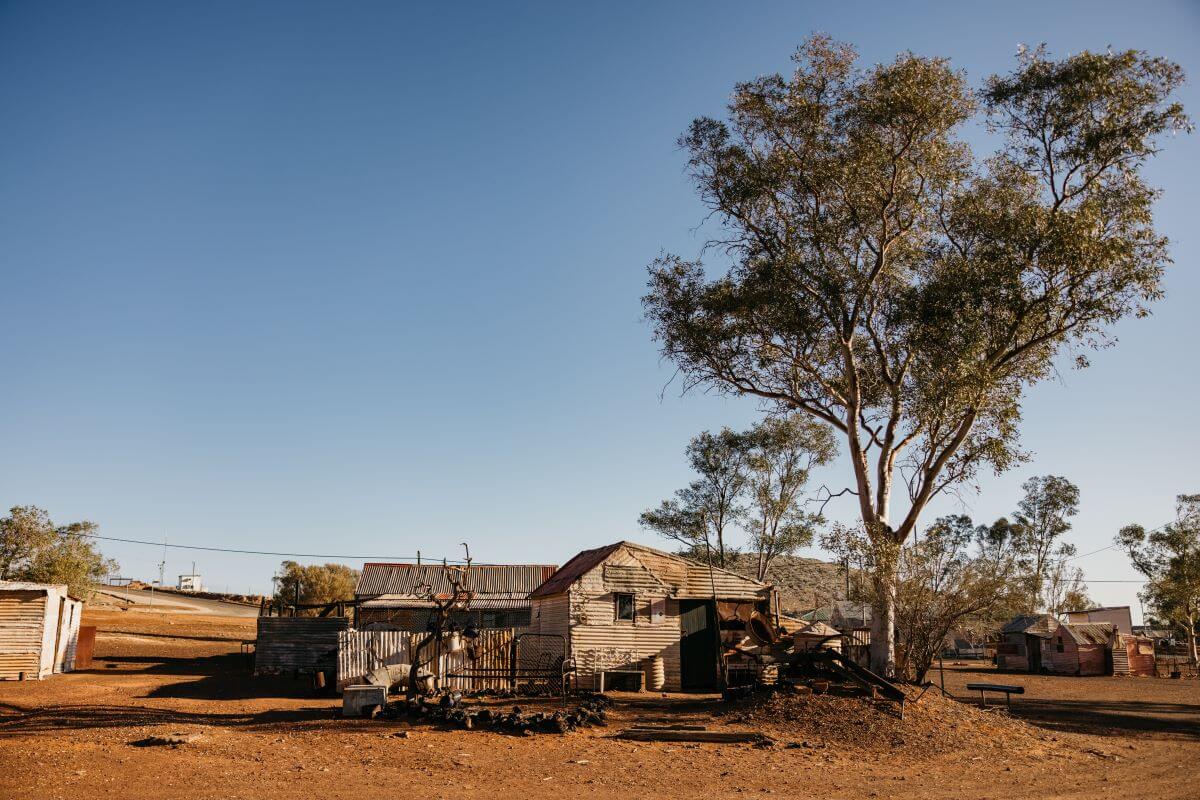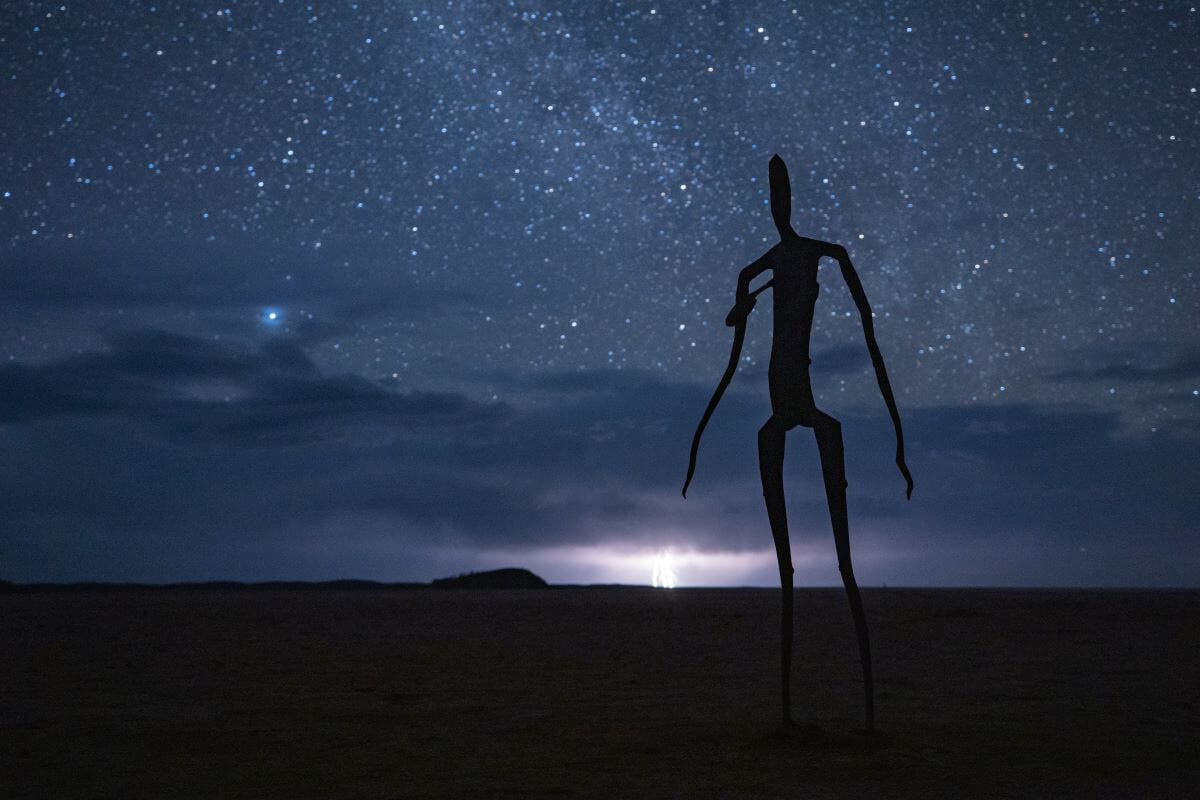Have you ever wondered what became of the many mining towns in the Kalgoorlie-Boulder district after the gold rush? The region is now home to numerous ghost towns each featuring relics of a former life when the area boasted thriving communities of miners and their families.
For those wanting a glimpse into the past, The Golden Quest Discovery Trail will allow you to experience the region’s most historic spots. This four-day road trip takes travellers on an adventurous loop through the abandoned towns of the Goldfields region, each with its own unique story. Check out some of the most notable ghost towns below!

Gwalia Ghost Town Image By Jarrad Seng
Gwalia
Located two and half hours north of Kalgoorlie, Gwalia is home to one of Australia’s largest gold mines, Sons of Gwalia Ltd, which was in operation from 1897 – 1963. The mine’s first manager was young American mining engineer, Herbert Hoover, who went on to become the 31st President of the United States. This lively township served hundreds of gold mining families with a 1200-strong population. The settlement thrived until the final whistle blew on 28 December 1963, shutting down the mine and putting 250 men out of work. In less than three weeks, the population fell to a mere 40 people.
Visitors to Gwalia today will be greeted by a ghost town untouched by time. Twenty of the original buildings have been restored to how they would have looked when the mine was operating including miner’s cottages, guest homes and the general store. Those wanting to stay the night should check out the renovated Hoover House B&B which was constructed under the direction of Herbert Hoover himself whilst managing the gold mine. Alternatively, there is a designated campsite for those exploring the region by caravan.
Broad Arrow
The town of Broad Arrow was gazetted as Kurawah in 1896, a name given to the region by the Wangkatha people who are indigenous to the area. It is said that the town’s name was changed after a prospector found gold nearby and marked his way back to the spot using broad arrows. By 1900 the town had an estimated 2,400 residents boasting eight hotels, two banks, a cordial factory, two breweries, a hospital with a designated fever ward, stock exchange, resident magistrate, blacksmiths and even a Dramatic Society. The glory was however short-lived. Broad Arrow’s gold rush was over by the mid-1920s with miners being forced to relocate to other goldfields or returning to Kalgoorlie. The town only existed for 25 years in its entirety.
All that remains of this ghost town today is the Broad Arrow Tavern. Built in 1896, it is your quintessential outback pub known for its cold beer and ‘Broady burgers’. It was even was featured in the 1971 movie The Nickel Queen which starred Googie Wither and John Laws. The Tavern doubles as accommodation for those wanting to stay the night. Broad Arrow is only a half-hour drive north of Kalgoorlie and it is rumoured that you can still find gold here today so be sure to stop by on your journey through the Goldfields.

Antony Gormley Sculpture Image by Jarrad Sing
Menzies
At the height of the gold rush, the town of Menzies had a population of over 5,000 people, several hotels and breweries and even a 40-bed hospital. Named after Lesley Robert Menzies, who discovered significant gold reserves in the area in 1984, this town is located one and a half hours north of Kalgoorlie. Menzies’ iconic Town Hall was built in 1896 and sported a blank-faced clock tower for over 100 years. It is said that the ship transporting the tower’s clock from England sank whilst en route in 1905 and a new one never ordered. A replacement clock was however installed in 2000.
Today Menzies is the door to the world’s largest outdoor gallery ‘Inside Australia’, crafted by internationally renowned artist Antony Gormley. The gallery covers an expanse of 10 sq km with sculptures dotted around the salty beds of Lake Ballard. Known as the Gormley sculptures, the works were created in 2003 in celebration of the 50th anniversary of the Perth International Arts Festival. Visitors to the town can grab some lunch at the local hotel or make Menzies their base and book into the caravan park for a few nights whilst exploring the surrounding region.
Kookynie
During the gold rush, Kookynie was home to over 1,500 residents, six hotels, a brewery and was the first town in the Goldfields to have public baths. In its heyday, the town was even home to a red light district run by Japanese residents living in the area. Serious flooding caused the closure of the town’s Cosmopolitan Gold Mine in 1923 and the population began to dwindle soon after.
Today Kookynie is a ghost town with only 13 permanent residents. The town, located two hours north of Kalgoorlie, is however a hub of tourist activity with many visitors wanting to get a taste of its unique character. Kookynie’s Grand Hotel, which was opened in 1902, houses a display of historic photographs and memorabilia. The hotel’s pub is home to a special guest, Willie, a horse who wandered into the pub 6 years ago and has yet to leave. Willie even has his own Facebook page keeping everyone up to date on his interactions with guests. When visiting Kookynie, make sure to stop by the nearby Niagara Dam which was built by C Y O’Connor in 1898 to provide freshwater to the railway line connecting Kalgoorlie and Menzies. Today the dam is a popular picnic spot for a refreshing swim or an overnight stop under the stars.
Goongarrie
Goongarrie was the first location of gold discovery after Coolgardie. The town was originally named Roaring Gimlet because of the cold south-westerly wind that blows through gimlet trees growing in the area. During the 1890s Goongarrie coined the nickname Ninety Mile as it is located ninety miles north of Coolgardie. At its peak, the town included a host of hotels, bed and breakfasts, a coach stop, a railway and a thriving retail area.
Now all that remains of the original town are three historic railway cottages. The region has since been declared a national park featuring granite outcrops and includes part of Lake Marmion. The park is known for its collection of attractive wildflowers which flower after it rains. Visitors to the area can camp at the Goongarrie Homestead where guests will find wood barbecues, a water supply, showers, toilets and provisions for electricity.